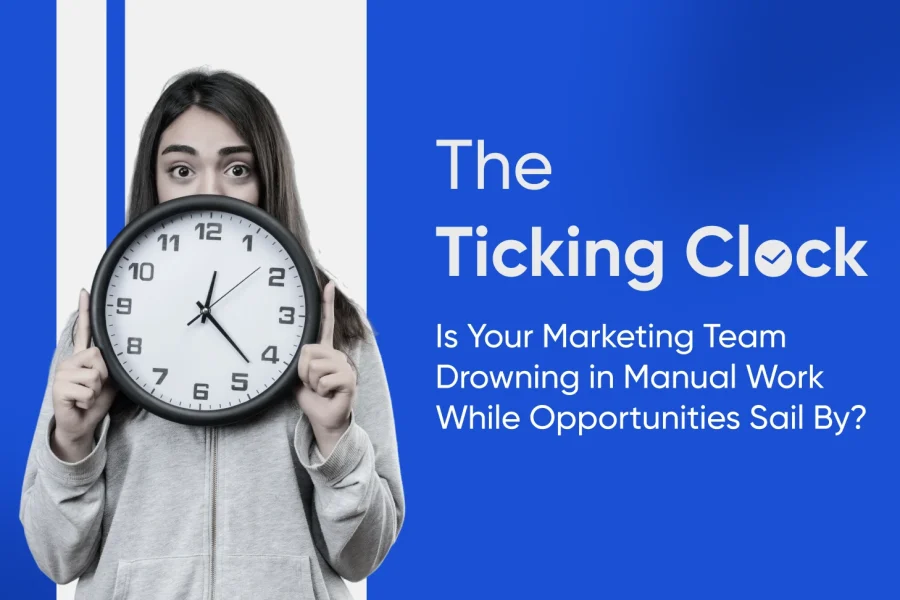Imagine this:
It’s Monday morning.
You’ve just approved another seven-figure marketing budget increase.
Your CMO promises breakthrough campaigns that will finally surpass your competition.
Fast forward three months same market share, same results, different excuses.
What’s happening?
Your marketing department, your sleek, high-priced racing yacht is anchored in the harbor.
Not due to lack of talent or desire, but because your people spend their days handling emergency repairs and routine maintenance rather than charting a course toward new opportunities.
Sound familiar?
If so, you’re in good company and it’s costing you more than you might realize.
The Modern CMO’s Problem: Execution Overwhelming Strategy
Let’s be clear: this isn’t just operational friction, it’s a strategic liability.
Research from Deloitte and the CMO Council reveals a stark disconnect: while 66% of CMOs aspire to dedicate their time to global business strategy alongside leadership, only 16% actually do. Instead, a staggering 45% of their time is consumed by reviewing plans and budgets, and 42% by internal meetings, clear indicators of being mired in executional quicksand.
~Consultport
Consider this analogy: hiring highly skilled strategists with Ivy League MBAs and six-figure salaries, only to see them bogged down in routine data entry tasks, is like purchasing a Ferrari solely to deliver groceries. It’s a misallocation of resources that undermines strategic potential.
Think of your marketing team as a world-class orchestra. Today, instead of delivering powerful performances, they’re busy arranging chairs, tuning instruments, and organizing sheet music leaving minimal time to rehearse or compose revolutionary symphonies.
What happens when your brightest marketing minds spend most of their day buried in spreadsheets instead of crafting effective strategies? They become disengaged, disillusioned, and eventually leave taking their innovative potential directly to your competitors.
The True Cost of Business as Usual
Warning: Your CFO May Need a Drink
Here’s what your CFO really needs to hear: operational inefficiencies quietly drain your bottom line in three crucial ways:
-
Drowning in Busywork (While Innovation Suffocates)
Marketing teams are significantly burdened by manual and inefficient processes. Marketers can spend 20% or more of their work hours just on reporting tasks. In broader terms, teams managing even a moderate number of marketing tools may dedicate nearly a third of their week, around 28%—to manual operational tasks. Furthermore, a staggering 32% of sales and marketing time can be lost to fixing data issues. This operational drag often stems from deeper systemic inefficiencies and significantly hampers innovation and agility. [Sources: Adriel, Gartner via Selling Simplified, Funnel.io]
Imagine a pie chart here illustrating the substantial time spent on various repetitive manual tasks.
-
Burning Budgets (with Nothing to Show):
Operational inefficiencies, particularly those stemming from manual processes and poor data quality, significantly erode marketing budgets. It’s estimated that bad data alone can lead to squandering 21% of media budgets. Furthermore, reliance on manual optimization strategies, as opposed to AI-driven approaches, results in substantial opportunity costs; advertisers using Google’s AI-powered Smart Bidding see an average 30% reduction in cost per acquisition compared to manual methods. This highlights the millions potentially evaporating from budgets due to outdated practices. [Sources: Funnel.io, Numberanalytics via Google]
Picture a bar graph here illustrating your intended marketing expenditure versus the substantial inefficiencies resulting from manual processes and poor data quality.
-
Rear-View Mirror Decisions (When Speed is Essential):
Your current marketing process is like trying to win the Indy 500 while stopping every mile to manually check oil and tires. Meanwhile, your competitors have pit crews making these adjustments instantly, maintaining top speed. Decisions based on weeks-old data mean you’re constantly chasing yesterday’s opportunities with outdated tactics.
Quick Self-Assessment: Is This Your Marketing Reality?
Take 30 seconds and answer honestly:
- Do your marketing reports take days to compile, only to be outdated as soon as they’re done?
- Has your team missed market opportunities because they’re overwhelmed by current campaigns?
- Do strategic meetings frequently devolve into tactical firefighting?
- When was the last time your marketing team proactively suggested a strategic shift capable of reshaping your market position?
If you answered “YES” to even one, your marketing processes might be your biggest anchor.
The Classic Workflow Trap: Marketing Misery Illustrated
Typical marketing workflows likely resemble this common, painful routine:
-
Planning (Days of Data Archaeology)
Teams spend almost a week manually extracting insights from scattered data sources. This tedious process is akin to using archaeology to uncover artifacts, while your competitors leverage satellite imagery to reveal entire lost cities.
-
Execution (Digital Herding Cats)
Campaign execution involves coordination headaches, constant revisions, and ensuring brand consistency across multiple teams. One CMO likened it to “herding cats while those cats chase mice, all going in different directions.”
-
Optimization (Too Little, Too Late)
By the time actionable insights emerge, budgets have been exhausted, and campaigns are already over. Insights become post-mortems stored away and forgotten, like calling firefighters after your house has burned down.
Imagine a simple 3-step flowchart here:
Planning → Execution → Optimization, highlighting common pain points such as ‘Data Archaeology,’ ‘Digital Herding Cats’ and ‘Insights Arriving Too Late.’
The Path Forward: From Reactive Executors to Proactive Innovators
Imagine if your team could escape this cycle, reclaiming lost time and budget to become proactive innovators instead of reactive executors.
A revolutionary approach is making exactly this possible.
Disrupt or Be Disrupted: The Choice is Yours
It’s no longer about whether you can afford change; it’s about whether you can afford not to.
In our next article, ‘Beyond the Hype: What is Agentic AI, Really?
And Why Your CFO Will Actually Love It!
We’ll introduce Tatvic’s proprietary framework for measuring and realizing tangible ROI from resolving these operational bottlenecks transforming your marketing department from a cost center into a genuine strategic powerhouse.
The competitive clock is ticking.
The decision is yours: Will you disrupt or be disrupted?


